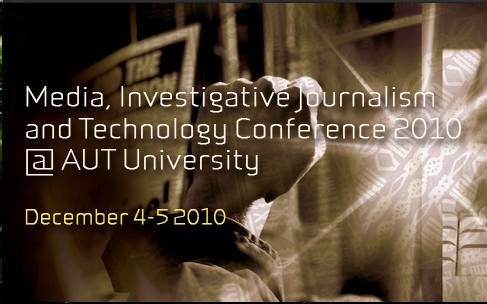
Creative non-fiction is important to enhancing investigative journalism, a news academic told the Media, Investigative Journalism and Technology Conference at the weekend.
Creative non-fiction, pioneered in the United States by Truman Capote in the 1960s, is a tool for investigative journalists to tell a story without the constraint of objectivity.
Dr Janine Little, from Deakin University in Australia, talked about two crime stories that have been turned into creative non-fiction; Honeymoon Dive by Lindsay Simpson and Jennifer Cooke and Joe Cinque’s Consolation by Helen Garner.
Dr Little said both of these stories started out as front page news stories.
“The tragic and somewhat dramatic deaths of Joe Cinque and Tina Watson make for strong news copy,” Dr Little said. “There was a lot of follow up of the Watson case.”
However, straight news and current affairs programmes could not send reporters to sit with friends and family of the victims or discuss the case in-depth with the police involved, Dr Little said.
She was speaking at the MIJT conference organised by AUT's Pacific Media Centre.
Honeymoon Divefollows the trial of Gabe Watson, the rescue diver accused of killing his wife, Tina, on their honeymoon in the Great Barrier Reef, Australia in 2003.
Watson recently travelled back to the US after serving a short sentence for his manslaughter conviction in Australia. He was arrested on arrival in Los Angeles and faces a possible trial in his home state of Alabama. US authorities have assured the Australian Government that Watson would not be subject to the death penalty in the event of a guilty verdict for murder.
Joe Cinque’s Consolation follows the story of Cinque and his girlfriend, who was imprisoned for his murder, and recently released.
Dr Little argued that follow-up creative non-fiction is important to enhancing investigative journalism.
“Due to commercial pressures creative non-fiction has increased the critical mass of investigative journalism,” she said. “Creative non-fiction takes the time to explain the back story that journalism cannot.”
The difference between the two genres is the ability of the author to take a personalised opinion.
“It’s stepping back from objective journalism,” Dr Little said. “Creative non-fiction is an outlet to take a position.”
Dr Little said the lack of objectivity enhances the story but may arrange the facts in a way that influences the audience’s opinion on the suspect’s innocence.
“The performative aspect of the truth is not the same as the truth,” she said.
Many critics warn of the influence Honeymoon Dive may have on Gabe Watson’s right to a fair trial in the US.



